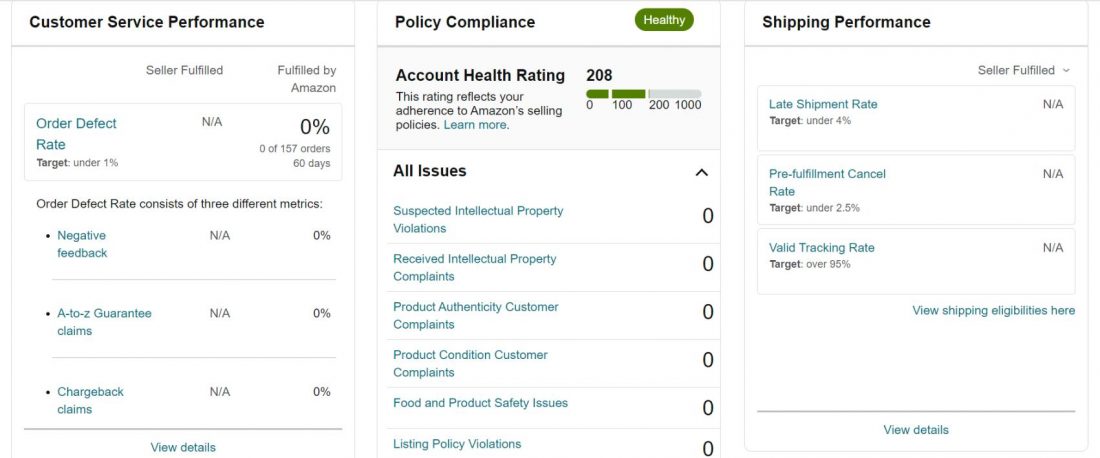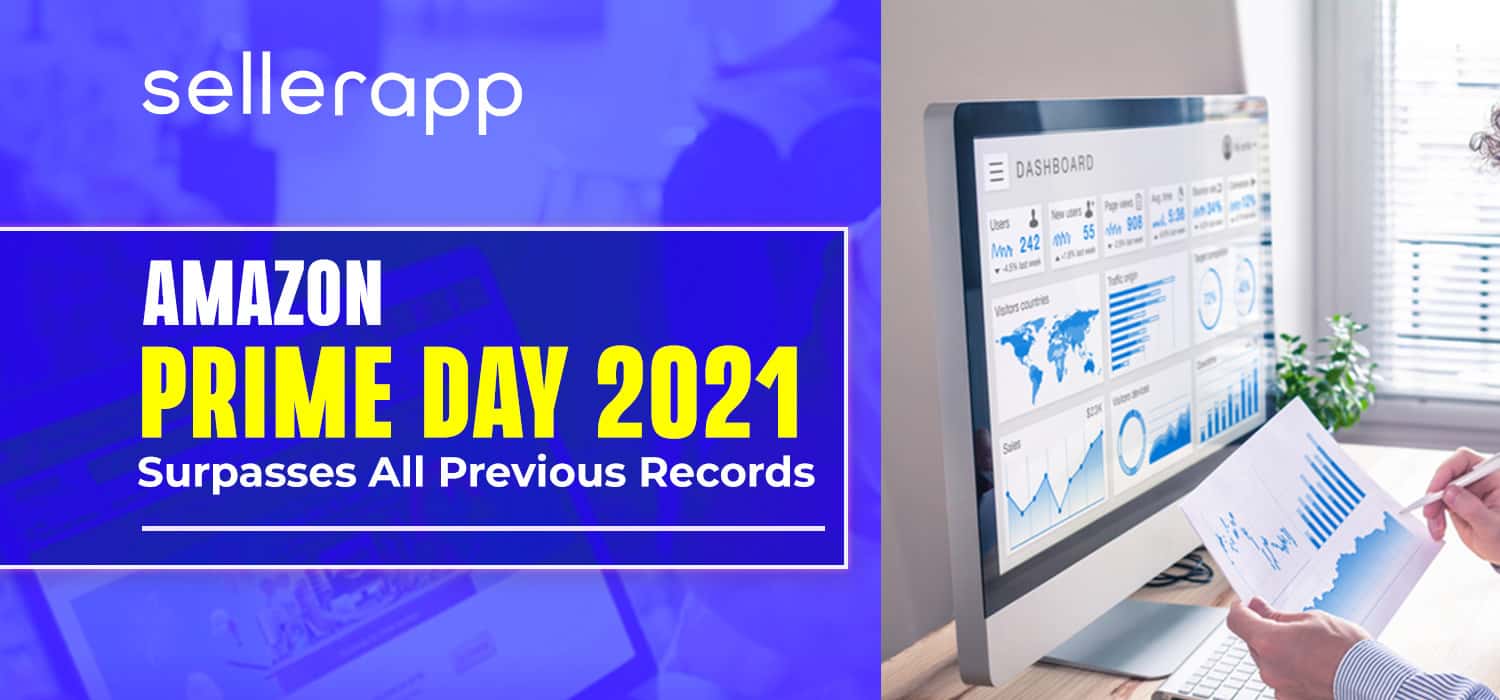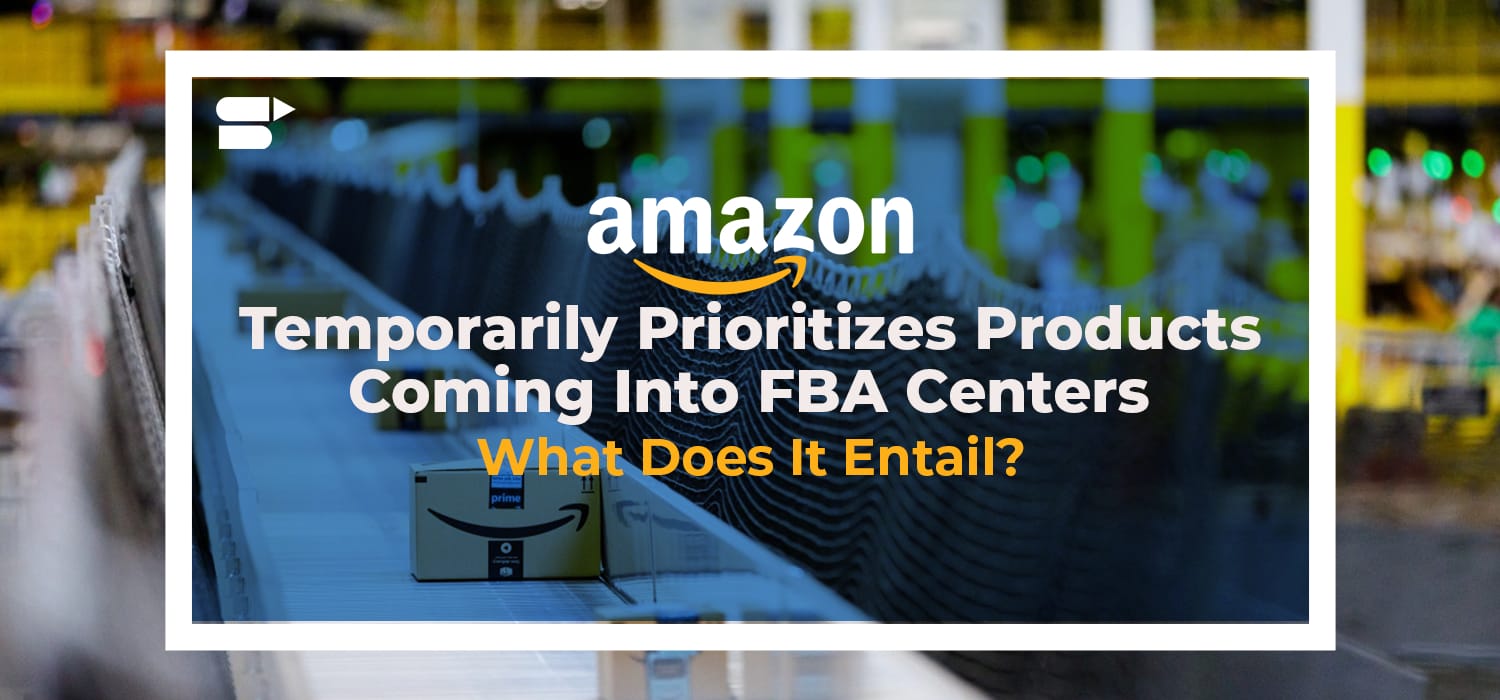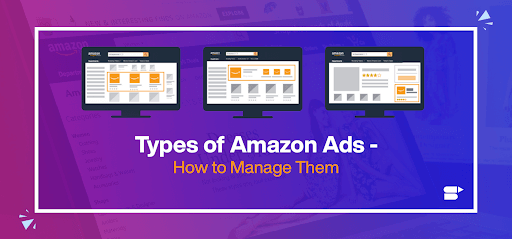Amazon Account Audit: The Ultimate 10-Step Checklist

Imagine going through all the trouble to source a product and set up a business, only to see zero sales on Amazon or performance metrics not being met. However, this may be an easier fix than you think. All you need to do is conduct an Amazon account audit and address the issues one at a time.
More importantly, conducting this audit regularly can help you isolate any challenges that prevent you from scaling your brand drastically on the e-commerce platform.
Whether you’re a new seller looking to launch a product or a seasoned seller with years of experience, we recommend regularly following a set Amazon account audit template or a good Amazon account audit checklist. We at SellerApp understand that auditing an Amazon account may be daunting. Therefore, we’ve compiled a checklist to help you get started.
What is an Amazon account audit?
Conducting an Amazon account audit is critical for several reasons:
Firstly, it helps you stay on top of any compliance with Amazon’s policies, reducing the risk of suspension or account closure due to any policy violations.
Secondly, an audit helps improve your Amazon’s sales performance by identifying areas for enhancement in product listings, pricing strategies, customer feedback, and more
Finally, auditing an Amazon account can identify areas for cost savings, optimize inventory management, enhance customer service, and ensure on-time fulfillment, all of which contribute to improved profitability and business growth
Conducting regular audits also helps sellers stay ahead of the competition, maximize sales profits, and maintain a healthy and successful FBA business.
How often do you need to conduct an Amazon account audit?
Different sellers report different timeframes when it comes to Amazon account audit frequency. However, the frequency of the account audit will ultimately depend on your sales volume, ad spend, and conversion.
You will need an audit if your sales volumes are drastically shooting up or if it’s dropping. More importantly, you will need to determine if your product conversions are low and your ad spend is high.
Of course, you will need to prioritize a deep audit depending on external factors. For example, you will need to conduct an audit when there are Amazon FBA fee changes and figure out how it’s impacting your bottom line and so on.
Additionally, another important moment to consider is when you’re scaling quickly. If you have a large sales volume, you’ll need to conduct an audit to ensure that you’re as efficient as possible and not wasting any money.
We recommend that you conduct a deep audit every 6 months and an advertising audit every 2-3 months.
Most importantly, it’s key that you follow the same Amazon account audit template that you used for the previous audit as this will help you easily compare data and isolate any issues with ease.
Self audit VS Third-party audit
A self-audit is pretty straight forward, it’s when you or your internal team conduct the Amazon account audit. A third-party audit, on the other hand, is essentially outsourcing the audit to a firm that specializes in conducting these audits.
Self-audits, while inexpensive can give rise to more bias, and errors and may not result in a deep audit with clear insights. Third-party audits come with an external expert analysis and specialized tools, giving you that more comprehensive and objective evaluation.
Sellers in the launch phase with a limited budget should conduct an audit by themselves. However, when you’re about to enter your growth phase and scale, efficiency is non-negotiable. Therefore, you will have to depend on a third-party audit.
More importantly, third-party audits give you in-depth analysis, compliance verification, and professional recommendations to enhance your Amazon selling strategy.
Major brands could depend on third-party audits. However, if you have integrated APIs and built your unique backend system, then you’re better off building your audit system as you will have metrics that are unique to you.
How to conduct a deep Amazon account audit
If you’re wondering How do I audit my Amazon account?, you’re in luck. After having reviewed thousands of Amazon Seller Accounts, we’ve compiled an Amazon account audit process that delivers results:
Setup audit
The setup check of the Amazon seller central account audit is pretty straight forward. During this section of the audit, make sure you’ve accurately entered your business, personal, and billing information.
Additionally, check if you’ve added the right information for all of your products and Amazon store.
Of course, you only need to do this once. However, thoroughly go through all these details to make sure there aren’t errors.
Policy compliance audit

A detailed compliance check is extremely important to avoid any penalties or account even account suspension. To efficiently check policy compliance on an Amazon account, follow these steps:
1) Head to the Account Health section in your Amazon Seller Central account.
2) Under the product compliance requests section, look for any notices or alerts. Specifically, keep an eye on different categories of product violations like intellectual property complaints, product safety complaints, and listing policy violations by visiting your account health page regularly. Do this even if it’s not part of a formal audit.
3) If there are compliance requests, upload the necessary documentation such as a Children’s Product Certificate (CPC), General Certificate of Conformity (GCC), test reports, and/or other relevant documents.
4) Now, that you’ve identified any violations, take immediate action to rectify them by understanding the issue. Prepare an appeal letter with evidence, and submit all required documents within the specified deadline.
By following these steps, you can proactively monitor your Amazon account’s compliance status, address any violations promptly, and maintain a healthy account status.
Performance audit
Key performance indicators or KPIs are extremely important when conducting an audit. These KPIs will help you understand where your business is failing and succeeding.
However, it’s important to use the same metrics each time you conduct the audit and compare the numbers from the previous audit. This will help you understand the impact of your changes.
As for specific KPIs, these will depend on each aspect of the audit. For example, the advertising section of the audit will have specific KPIs such as ad-related sales, conversions, revenue, wasted ad spend, new keyword discovery, RoAS, and ACoS.
While the KPIs will change for each section, you will also have to determine the KPIs yourself if you’re going ahead with a self-audit. You need to figure out what metrics make the most sense for your business.
Of course, a third-party audit will come with its own set of KPIs and will depend on your conversation with them.
Listing and product detail page audit
The listing and product detail page audit is extremely important as it page that converts your potential lead to a paying customer. You can do everything right and if this page is lacking then you may not be able to maximize your conversions.
This audit provides insight into the performance of the listing, product detail page errors, retail readiness issues, customer engagement issues, compliance issues, and more.
Regular listing audits are crucial as they help you improve your ecommerce performance, stay competitive, and cash flow positive. More importantly, you can reduce the risk of any suspension or account closure.
Fundamentally, the information on the product details page enables your customer to make a purchasing decision. This is the closest they come to viewing the product without actually being able to hold it.
To conduct an effective listing and PDP audit, you should check for the following:
Retail Readiness: The retail readiness guidelines provided by Amazon are often overlooked. However, it’s essential to follow these to a T if you want to run effective ads and maximize the sales potential.
A well-optimized listing and product details page would contain the following information:
- High-quality images with a lifestyle image
- Easy-to-understand titles
- Descriptive bullet points
- Enticing A+ Content with detailed product descriptions
- More than 15-star ratings and positive reviews
We recommend that you complete Amazon’s retail readiness course and then go through the below article for more clarity.
Master Amazon’s Retail Readiness Checklist to Get Approved Fast
CTR (Click Through Rate) and CVR (Conversion Rate): The CTR and CVR (more commonly referred to as unit session percentage) of the ad will help you understand the effectiveness of the listing needs to be improved or optimized.
For example, if the CTR is high and the CVR is low, this would indicate that people are interested in the product but may not be convinced by the information on the product detail page. At least convinced enough to make a purchase.
Of course, the reasons would depend on several factors. Perhaps, you don’t have A+ content or a product description without key information.
On the other hand, if the CTR is low but the CVR is high, this would indicate that the product detail page is good enough to convert but it’s not getting enough views.
SEO strategy review
An SEO Amazon Account Audit helps sellers optimize their product listings, improve their visibility in search results, drive more traffic, and ultimately increase sales. While PPC should be a part of your short-term and long-term strategy.
Improving your Amazon SEO should always be a top priority as it is crucial to maintain a strong brand presence on Amazon and drive business growth. To conduct an effective Amazon SEO audit, consider the following:
Brand Presence: Begin this SEO audit by evaluating your overall brand presence and make sure your products are competitively priced and in stock. This is especially important if you’ve already won the buy box. To effectively track Brand presence and understand its share of voice on the platform, we recommend using third-party tools like SellerApp.
Keyword Research: Next up is keyword research. When it comes to keyword research, you should make sure to include high-performing keywords that can help your listing rank.
More importantly, you include your competitors’ keywords in your listings so that you can compete at the category level. Deep dive and try to analyze the competition’s keyword strategy and consider incorporating relevant terms into your copy for better visibility.
Product Page Listing Optimization: Stellar keyword research isn’t enough to help you rank. You need to Implement Amazon SEO best practices and use good copywriting to enhance your product page listings. Of course, we don’t know what are the exact ranking factors.
However, from tracking the performance of thousands of listings, we also understand that these listings should include key elements like titles, descriptions, images, A+ content, and brand storytelling for better engagement.
Keyword Index Review: Once you’ve added Keywords to your listings and the backend, you need to check if it’s indexed.
Analyzing pricing and competitiveness
Reviewing the pricing strategy is an extremely important part of the account audit for Amazon sellers, especially if you’re struggling to win the Buy Box. Fundamentally, compare your product prices with competitors to understand market positioning and pricing trends.
More importantly, make sure to study consumer behavior, income levels, buying habits, and financial considerations to set prices that resonate with your target audience. The most successful brands run surveys to understand what their customers are willing to pay.
Finally, avoid pricing strategies that could violate Amazon’s policies and strive to maintain a positive reputation and trust with your customers.
FBA audit
If you’re outsourcing order fulfillment to Amazon, then you’ll have to make sure to conduct a thorough Amazon FBA seller account audit. Begin this audit by inspecting the FBA-related inventory practices.
Specifically, go over your timeline from sourcing to delivery to the Amazon warehouse. Additionally, ensure compliance with FBA seller requirements.
This audit also includes examining the FBA shipping plan and ensuring that there are no errors.
Ultimately, this audit should give you ideas on how to improve your overall FBA selling process and fulfillment operations. Ultimately, you should aim for an amazing customer experience and great feedback.
Customer service audit
The vast majority of Amazon sellers do not evaluate customer service practices. Unfortunately, a positive customer experience is an absolute necessity when it comes to scaling your brand on Amazon. This customer service section of the audit should ideally include the following:
Review Customer Feedback: The lowest-hanging fruit when it comes to customer feedback is to identify any recurring issues and fix those areas of concern. This could be the product, the packaging, or poor communication with the customer amongst other issues.
Assess Response Time: Customers expect an immediate reply to their queries. This affects their decision to purchase your product.
Unfortunately, the vast majority of sellers do not reply or reply way too late when it comes to customer queries or feedback. This can have a terrible impact on your brand as your potential customers will read those negative reviews.
Therefore, you must fundamentally evaluate the timeliness and effectiveness of responses and improve all aspects to ensure a prompt and satisfactory resolution.
Check Communication Quality: Other than the response time, the quality of the communication is also absolutely critical. Ensure that the content of the communication is professional and helpful and that it fundamentally addresses the customer’s concerns adequately.
Evaluate Dispute Resolution: It’s also extremely important that you evaluate how disputes are resolved. As a business, you will have disputes with your customers such as returns, refunds, and other issues. It’s unavoidable. However, how you respond to those disputes and resolve them will impact your brand’s success. Therefore, review the content, the process, and the time of how you resolve issues and standardize them.
Monitor Customer Satisfaction: Just because your product and packing quality are amazing doesn’t necessarily mean that it’s the right one for your customer. After all, they could love your competition better as they provide more value.
Therefore, audit how you track customer satisfaction what metrics you use to gauge customer satisfaction, and how you use that feedback to differentiate your product from the competition, reduce churn, increase customer lifetime value, and limit any negative word of mouth.
Training and Development: If you have a team to handle customer service, ensure the communication isn’t haphazard. Assess how it’s currently done and then set SOPs on how to communicate effectively. We recommend you invest in training and development to enhance their skills in dealing with customers.
Utilize Customer Service Tools: During the audit try to maximize efficiency, if it’s better for one or two customer service executives to manage responses with the help of tools such as eDesk, then that may be the better option for your business.
Naturally, Amazon also comes with its own set of tools to improve customer interactions that you can leverage.
Implement Feedback Mechanisms: Collecting feedback is extremely important. Generally, the percentage of people who leave feedback is low and you need to incentivize them or set mechanisms in place to improve these numbers as it’ll impact your listing quality.
Ultimately, it’s important to assess any areas where you may be lacking in terms of customer service and then improve those negative aspects.
Financial health audit
When selling on Amazon, there are various costs, expenses, and fees associated with the process. Here are some important fees to consider:
Listing Fees: The fees charged for listing products on Amazon. Of course, this is only applicable to sellers with an individual account.
Referral Fees: A percentage of the sale price paid to Amazon. Sellers who’ve subscribed to the professional seller’s plan do not have to pay referral fees.
Fulfillment Fees: The fees charged for using Amazon’s FBA service.
Additional Service Fees: Optional services like advertising or premium account features.
Monthly Subscription Fee: Sellers on the professional plan have to pay a standard monthly fee of $39.99.
Amazon Exclusives Fee: This is a fee charged by Amazon to sellers who want to enroll their products in the Amazon Exclusives program — a program designed for sellers who have unique products and want to sell them exclusively on Amazon.
Refund Administration Fee: Charged for refunded items.
Shipping and Fulfillment Fees: Vary based on products and fulfillment method.
Miscellaneous Fees: For dangerous goods, refurbished items, etc.
We recommend you track all of the fees listed here.
By conducting a thorough audit of these fees, sellers can optimize their costs and maximize their success on the Amazon platform. However, your primary goal should be to ensure profitability while in compliance. Here are some best practices for a successful financial audit:
Evaluate Financial Performance: Always begin your Amazon financial audit by analyzing the broad/overall financial performance of your brand on Amazon. This includes tracking sales, expenses, fees, profits, and overall cash, and figuring out if you’re in the black and by how much.
Review Fee Structures: When you have a bigger picture of your profitability, deep dive into the all fees associated (the ones listed above) with selling on Amazon, such as listing fees, referral fees, fulfillment fees, and other charges, to understand their impact on your financials.
Determine what are essential fees for your business and try to optimize your fee spend to maximize profitability. This may involve pivoting from an individual plan to a professional plan or even disenrolling from the Amazon Vine program (Vine fees) when you have enough reviews, etc.
Assess Profit Margins: While you can easily understand the overall profit margin of your brand, you must also calculate your profit margins for different products to identify which ones are most profitable. Figure out if you need to tweak product pricing or renegotiate a better deal with your supplier to improve your margins.
Analyze Financial Risks: Looking for opportunities to improve is important. However, you must also analyze potential financial risks, such as high fees, low margins, product trends, and more to understand how a potential lull can negatively impact your business.
When done, you can effectively develop strategies to mitigate these risks.
Take Advantage of Financial Tools: Keeping track of your cash flow and all the various details is extremely important. However, it’s also a cumbersome process.
While you may not be able to use tools for the entire audit process, you should try to use accounting software tools to make this financial audit as efficient as possible. By depending on these tools, you will also limit human error and drastically reduce any inaccuracies.
Some of the best financial management tools that integrate with Amazon include Quickbooks, Xero, and Finaloop.
Lean on a Professional: Conducting an Amazon financial audit can be challenging and time-consuming. Therefore, consider hiring a financial expert or an Amazon Account Auditing service that specializes in financial analysis. These professionals tend to provide valuable insights and recommendations to improve your financial performance.
Security measures assessment
Unfortunately, security measures assessment is often overlooked. Conducting this analysis allows you to effectively identify any security issues and take measures to protect yourself against unauthorized access.
Specifically, focus on threats to compliance, confidentiality, and data, and update your overall system security accordingly.
Advertising audit
Even if you need to prioritize certain sections of the audit due to time or resource constraints, conducting an advertising audit is crucial as it’s one of the most important factors in an Amazon account audit. However, we highly recommend running a comprehensive audit as it’s extremely important.
A thorough advertising audit should assess the overall performance of all your advertising efforts. To conduct an effective Amazon Advertising audit, follow these key steps:
Campaign Structure Evaluation:
- Ensure your account is well organized. A well-structured campaign layout provides better control over optimizations and facilitates data analysis. Moreover, investing time in organizing campaigns now will simplify future audits.
- Tailor your campaign structure to align with your advertising goals. Create separate campaigns for each product type or category with consistent naming conventions. Maintain optimal product and keyword counts in each ad group.
- We also advise segregating keywords by match type to enhance control over placements.
Performance Metrics Analysis:
- Analyze PPC-specific metrics such as Cost per Click (CPC), Impressions, Clicks, Advertising Cost of Sale (ACoS), Return on Advertising Spend (ROAS), Sales, and Click-Through Rate (CTR).
- Compare these metrics over different periods to gain an accurate understanding of campaign performance and identify areas for improvement.
Ad Group and Ad Targeting Audit:
- Evaluate the performance of ad groups and targeting strategies to ensure effective audience reach.
- Assess conversion rates, click-through rates, ad spend, and sales generated by different ad groups to optimize targeting.
Keyword Analysis:
- Review keyword performance metrics including impressions, clicks, click-through rate (CTR), cost per click (CPC), and sales.
- Identify high-performing keywords and flag underperforming ones to add to your negative keyword list for refined targeting.
Bidding Optimization:
- Optimize bids to allocate more budget to profitable keywords and enhance overall campaign performance.
- Consider transitioning from automatic to manual targeting for greater control over keyword targeting and improved results.
By following these steps and conducting a thorough Amazon Advertising audit, you can optimize campaigns, reduce wasted ad spend, discover new keywords, and enhance the effectiveness of your advertising strategy on Amazon.
Regular audits are essential for maintaining competitiveness, maximizing ROI, and driving sales growth on the platform.
Common errors that limit brands from achieving their full potential
SellerApp has audited several thousands of accounts and these are the common errors that pop up:
Wasted Ad spend
Ultimately, the most common mistake would be to spend money on ads or campaigns that don’t convert. Of course, the bigger problem would be to double down on targets with a poor conversion rate.
Having a few campaigns with wasted ad spend is usually fine, as the majority of sellers don’t have access to third-party analytics tools that can access keyword trends, ranking, search volume, and important metrics.
However, when 50% or more of all spend is wasted, then you’ll need to restructure all your campaigns.
Yet, you also need to ensure that you don’t lose momentum. After all, the day-to-day grind of optimizing is a lot to ask of a seller or a brand focused on bigger-picture decisions. Unfortunately, without doing so, you’ll never find room for efficiency or effectively scale.
To limit wasted ad spend, the best approach is to track all the top-performing keywords and maximize their potential.
Simultaneously, you must also identify keywords or targets that aren’t performing well, analyze historical data and trends, and make decisions to lower the bid or move them into the negative keyword bucket.
Not taking advantage of placement settings
Did you know that 49% of consumers aged between 27 to 40 buy the first product listed on Amazon’s search result pages? This is hands down the most profitable placement for Amazon sellers.
Unfortunately, the majority of sellers out there don’t take advantage of the placement settings. Even if they do, it’s usually underutilized.
Amazon allows you to adjust bids by placement. Essentially, with this feature, you can set up a percentage increase for either the top of the search or on the product details page.
For example, if you’re bidding $1 for the keyword “dog food” and you want your products to appear at the top of the search results page, you can add a placement multiplier of 300% for either the top of the search position or the product details page.
It means Amazon will increase the bid from $1 to $4 to secure the top of the search position. Using data to find a good TOS setting that works for you is the best way to take advantage of this feature.
Missing campaign funnel structure
A missing campaign structure is a common error we come across when auditing a new client’s account. When sellers haphazardly structure campaigns, they not only miss out on potential conversions but also waste ad spend significantly.
Fundamentally, a campaign structure optimized for success must have a purposeful layout.
For instance, a primary auto campaign should funnel into a manual campaign. With auto-targeting, you can identify new keywords that drive sales. By transitioning these keywords to manual targeting, you can refine your campaigns for better conversions.
You might run a manual campaign to test phrase match type and broad matches for these keywords and, based on success, transition them to exact match.
Likewise, after a product targeting auto campaign, you could move them to SD or SB product targeting.
The keywords and product targets are then set as negatives in the auto campaign to continue discovering new keywords or ASINs without spending on those already moved to the next stage.
When these targets convert in the manual campaign stage, ideally, you should move them across ad types such as sponsored brands and sponsored display campaigns to maximize their potential.
Of course, this is just the beginning of structuring a highly effective campaign funnel. To optimize your account for success, consider opting for SellerApp’s Managed Services.
Final thoughts
Conducting an Amazon Account Audit is a highly critical practice that can ensure sellers stay in compliance with Amazon’s policies, enhance sales performance, optimize inventory management, improve customer service, and drive business growth.
Following a detailed Amazon Audit checklist like the one we’ve provided can help you easily adapt to changing business dynamics and improve the financial health of your business. However, conducting an effective audit and gaining usable insights can be daunting.
Therefore, we recommend you use our PPC Audit tool for a free Advertising audit or reach out to us here if you want assistance with a deep audit.
Ultimately, these audits can help you stay competitive and set you up for long-term success on the Amazon platform.











Devin Jacobs
May 6, 2024I always prefer to read the quality content and i found very high quality content in your blog, really thank you for this post.
Clare Thomas
July 31, 2024Thank you for the recognition and appreciation.
Lucas Morris
May 7, 2024Amazing post, thanks for sharing this article. I am truly motivated by you for blogging.
Thank You
Clare Thomas
July 31, 2024Happy to hear that you got motivated by this article.
Johann Hill
May 9, 2024Great content! Your Blog is very nice. Wish to see much more like this. Thanks for sharing your information.
Clare Thomas
July 31, 2024Sure we will share more blogs.
Gavin walton
May 9, 2024Enjoyed reading the article above , really explains everything in detail, the article is very interesting and effective. Thank you!
Clare Thomas
July 31, 2024Glad that you like this article.
Tom Walker
May 13, 2024Your Blog is very nice. Wish to see much more like this. Thanks for sharing your information
Clare Thomas
July 31, 2024You are welcome!
Lila Grace
August 3, 2024Very clear explanation.
Clare Thomas
September 18, 2024Thanks.
Chloe Grace
August 27, 2024Learned a lot here.
Clare Thomas
September 18, 2024Happy to hear this.